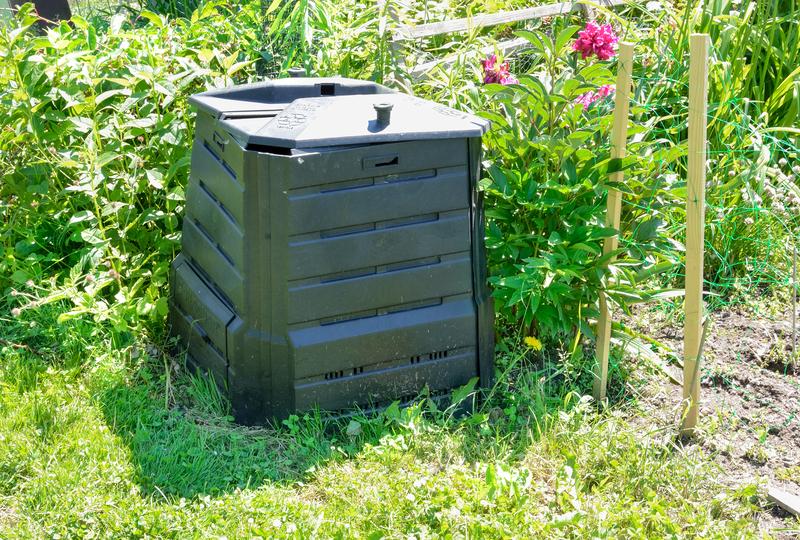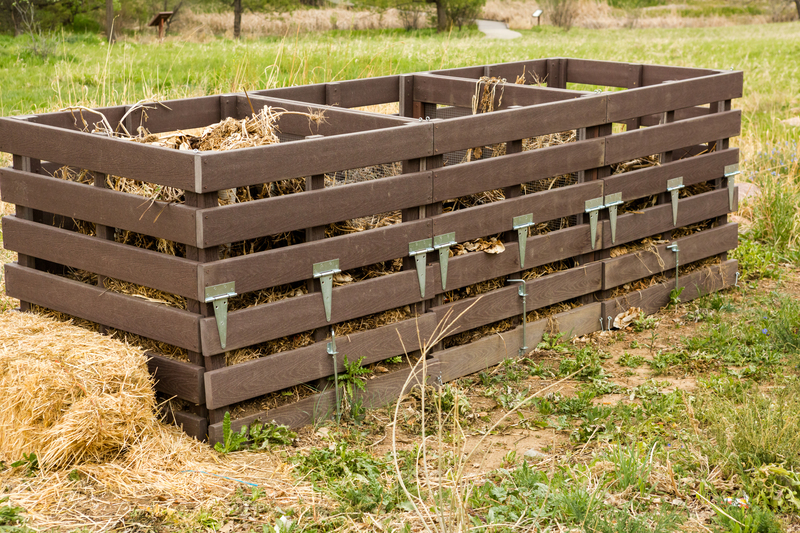What You Should Know About Environmentally Safe PPE Disposal
In a world still recovering from the COVID-19 pandemic and with sustainability at the forefront of global conversations, environmentally safe PPE disposal has become a crucial issue. PPE (Personal Protective Equipment) like masks, gloves, face shields, and gowns play a vital role in keeping individuals safe. However, improper disposal of these items contributes to significant environmental pollution, threatening ecosystems and human health. In this comprehensive guide, we'll explore what environmentally friendly PPE disposal means, why it matters, and how individuals, businesses, and organizations can make a positive difference.
Understanding PPE and Its Environmental Impact
Personal Protective Equipment (PPE) refers to a wide range of products designed to protect users from health and safety risks, especially pathogens. Common PPE includes:
- Masks: Surgical, N95, and reusable cloth masks
- Gloves: Latex, nitrile, and vinyl materials
- Gowns: Disposable and reusable medical gowns
- Face shields and goggles
- Shoe and head covers
The surge in demand for PPE during health emergencies, especially single-use varieties, has led to mountains of waste. According to a World Health Organization (WHO) report, the world generated an estimated 87,000 tonnes of PPE waste related to COVID-19 between March 2020 and November 2021. Most of this waste consists of non-biodegradable plastics, compounding the global plastic pollution crisis.
The Environmental Consequences of Improper PPE Disposal
- Plastic Pollution: Disposable PPE is commonly made from polypropylene and other plastics, which persist in the environment for hundreds of years.
- Microplastics: Over time, discarded PPE breaks down into microplastics, contaminating soil and waterways, entering the food chain, and posing risks to wildlife and human health.
- Wildlife Hazards: Animals can become entangled in used PPE, ingest it, or confuse it for food, often with fatal consequences.
- Incineration Risks: Burning PPE waste releases toxic gases and greenhouse emissions, further driving pollution.
- Clogged Sewers and Urban Flooding: Improperly discarded masks and gloves often clog drainage systems, increasing the risk of urban flooding.
Why Environmentally Safe PPE Disposal Is Essential
Addressing PPE waste responsibly is about more than environmental stewardship--it's also about public health, regulatory compliance, and setting an example for future generations. Moving toward eco-friendly PPE disposal solutions can minimize the impact on our planet and create cleaner, safer communities.

Principles of Environmentally Safe PPE Disposal
Environmentally safe PPE disposal involves methods and practices that minimize the negative environmental effects of used personal protective equipment. Here are the core principles:
- Reducing Single-Use PPE: Opt for reusable PPE when possible to decrease overall waste.
- Proper Segregation: Separate PPE waste from regular waste streams, especially if contaminated with hazardous substances.
- Biosafety Protocols: Ensure hazardous or contaminated PPE is handled and disposed of per health and safety guidelines.
- Responsible Recycling: Where possible, recycle used PPE using specialized recycling facilities or programs.
- Education and Awareness: Inform individuals and organizations about the importance and methods of safe PPE disposal.
Best Practices for Eco-Friendly PPE Disposal
How can organizations and individuals practice environmentally safe PPE disposal? Following best practices is the key to reducing PPE's environmental footprint:
1. Opt for Reusable PPE Where Safe and Possible
- Reusable masks, gowns, and face shields: Choose products that can be sterilized and reused multiple times over disposable alternatives.
- Avoid unnecessary single-use PPE unless regulations or health concerns mandate it.
2. Segregate PPE Waste
- Separate bins: Use clearly marked "PPE Waste Only" disposal containers in public spaces, businesses, and establishments.
- Keep contaminated PPE (from healthcare or suspected infectious individuals) separate from general waste.
3. Follow Local and International Guidelines
- Adhere to municipal regulations for clinical or hazardous waste, especially in healthcare settings.
- Stay informed about changing rules as the pandemic evolves.
4. Choose the Right Disposal Method
- Medical Incinerators: Use high-temperature incineration for contaminated PPE, minimizing airborne pollutants with modern filtration systems.
- Autoclaving: Steam sterilization renders infectious PPE non-hazardous before secondary treatment such as landfill or recycling.
- Energy recovery: Some facilities convert PPE waste into usable energy, reducing landfill use.
5. Responsible Recycling Options
While conventional recycling facilities generally do not accept used PPE (due to contamination), some innovative programs exist:
- Specialized PPE recycling programs: Some companies collect, sanitize, and process PPE waste into new plastic products (like construction materials).
- Research breakthroughs: Ongoing studies are exploring biodegradable PPE materials and more efficient recycling techniques.
Always check with local authorities or reputable organizations for current PPE recycling solutions in your area.
6. Do Not Litter or Flush PPE
- Never dispose of masks, gloves, or other PPE in open environments, streets, or bodies of water.
- Do not flush PPE down toilets as it will block sewer systems and pollute water bodies.
7. Educate and Encourage Proper Disposal
- Train staff and inform the public about environmentally safe PPE disposal through signage, workshops, and digital campaigns.
- Lead by example and support policies that mandate responsible waste management.
8. Support Sustainable Innovations
- Choose PPE made from biodegradable or compostable materials when available and practical.
- Advocate for research into greener alternatives for future pandemic preparedness.
The Role of Recycling in Environmentally Safe PPE Disposal
Recycling is one of the most environmentally friendly ways to manage PPE waste, but not all PPE is currently recyclable with conventional curbside systems. Here's what you should know:
- Contaminated PPE: Most recycling centers cannot accept used masks and gloves due to possible infection risks. Specialized programs are needed.
- TerraCycle and Similar Programs: Organizations like TerraCycle run mail-back programs that collect, disinfect, and process PPE for conversion into reusable plastic materials.
- PVC, vinyl, nitrile, and latex gloves: Some manufacturers offer take-back programs, or local programs may accept clean gloves for recycling.
- Industrial and hospital partnerships: Collaboration between hospitals, recycling companies, and manufacturers is facilitating circular PPE solutions.
While recycling environmentally safe PPE is still evolving, public demand is encouraging innovation and investment in this vital area.
Dangers of Improper PPE Disposal
Improperly disposed PPE poses a range of dangers:
- Community Health: Carelessly discarded PPE can harbor pathogens, increasing risk of viral spread among sanitation workers, waste pickers, and the broader population.
- Environmental Pollution: As noted earlier, plastics and microplastics from PPE harm land and aquatic life, threaten food chains, and contribute to the global pollution crisis.
- Legal Liability: Improper disposal may violate waste management regulations, leading to fines and reputational damage, especially for businesses.
- Surveillance Footprint: Littered PPE can act as a physical indicator of poor hygiene practices and waste management in an organization or municipality.
Handling PPE Disposal at Home and Work
For Households
- Wrap used masks and gloves in a tissue or paper bag before putting them in a dedicated trash bin.
- Wash hands thoroughly after disposal.
- Do not mix used PPE with recyclable materials or compost waste.
- Explore local PPE recycling programs, if available.
For Workplaces and Healthcare Facilities
- Establish clear PPE disposal protocols and provide marked disposal containers.
- Staff should be trained in responsible waste segregation and handling procedures.
- Contract with certified hazardous waste collectors or specialized PPE recyclers as needed.
- Perform regular audits of PPE disposal practices to identify and correct gaps.
Government and Industry Initiatives for Safe PPE Waste Management
Governments and industries around the world are launching initiatives to manage the growing PPE waste problem, including:
- Guidelines for Segregated Collection: Creating specific guidance for healthcare facilities and laboratories on distinguishing between regular and hazardous PPE waste.
- Funding Innovation: Investing in research and start-ups working on biodegradable PPE alternatives, advanced recycling, and waste-to-energy technologies.
- Public Awareness Campaigns: Educating communities about the importance of environmentally friendly PPE disposal through media, schools, and community groups.
- Producer Responsibility: Mandating that PPE manufacturers take responsibility for their products' end-of-life disposal or recycling.

Emerging Trends: The Future of Eco-Conscious PPE Disposal
Several notable trends are shaping the future of eco-friendly PPE waste management:
- Biodegradable PPE: Companies are developing masks, gowns, and gloves from starch-based fibers, polylactic acid (PLA), and other compostable materials.
- Reusable Innovations: Sterilizable, washable face masks and gowns are helping to shift away from throwaway culture in many industries.
- Advanced Sorting Technology: AI-powered waste sorting systems are improving segregation and recycling rates for PPE.
- Closed-Loop Manufacturing: Some manufacturers are piloting programs to collect and remanufacture PPE from production waste or post-consumer products.
While these solutions are not yet universal, they offer hope for reducing the environmental toll of PPE and building more resilient, sustainable waste management systems.
Conclusion: Making Environmentally Safe PPE Disposal a Priority
Environmentally safe PPE disposal is essential for safeguarding public health and protecting the environment. As individual citizens, healthcare professionals, businesses, and governments, committing to best practices for PPE disposal helps minimize pollution, protect wildlife, and foster a more sustainable future. By choosing reusable options where safe, properly segregating waste, supporting recycling innovations, and advocating for sustainable policy, we can all contribute to resolving the PPE waste crisis.
